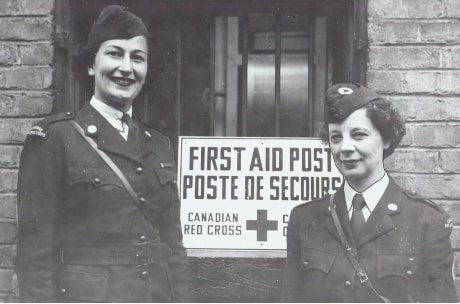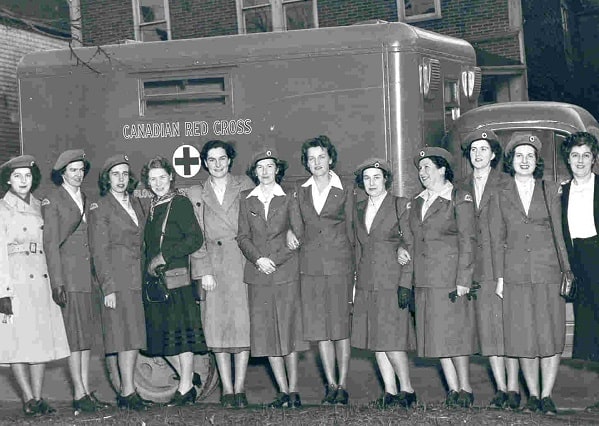By: Vanessa Racine, social media coordinator
“Without...women there would be no Red Cross as we know it."
Former executive committee chairman P.H. Gordon, in the late 60s
The Canadian Red Cross was founded in 1896, and since the very beginning women played a crucial role. To mark International Women's Day on March 8, we‘re going back in time from the beginning of the Red Cross to celebrate the victories, big and small, of women in Canada.
A lot has happened for Canadian women since 1896! Women's freedom, autonomy and equality have been won little by little, through laws passed, advocacy movements and battles won.
1897: Clara Brett Martin is the first women to practice law in Canada and in the British Empire.
1900: Teaching was the only career open to women in Canada that led to a pension.
1901: Women made up 13.4% of the total (paid) labour force. The marriage “bar” was in operation - women were legally required to resign upon marriage.
1914-1918: World War I - There was no significant increase in the number of women employed but there was a temporary influx and change in occupations away from domestic service. Attitudes toward single women working outside the home became more favourable. Women were employed in manufacturing on a mass scale for the first time, making munitions. During the war, Canadian women who volunteered with the Red Cross helped at home by fundraising, knitting comforts for soldiers like mittens and scarves, preparing medical supplies, and more.

1916: Women won the right to vote in provincial elections in Alberta, Manitoba and Saskatchewan. This was followed by BC and Ontario (1917), Nova Scotia (1918), New Brunswick (1919), Prince Edward Island (1922), Newfoundland (1925) and Quebec (1940).
1917: Alberta becomes the first province to set a minimum wage for women.
1918: Canadian women won the right to vote in federal elections, and the year after, obtain the right to hold office in Canadian Parliament; however, Indigenous and Asian women were not included.
1925: The federal Divorce Act is modified to entitle women and men to divorce for the same reasons.
1939 - 1945: World War II. During the war, women entered the workforce to take on critical positions that were left vacant when men left to fight. Once again, women played a critical part in the work of the Canadian Red Cross, providing aid items for civilians, troops, and wounded soldiers
1940: Women obtain the right to vote in Québec.
1940: Thousands of Canadian women enlisted in a uniformed, disciplined group of volunteers specially trained for overseas wartime service, known as the Canadian Red Cross Corps. The Corps offered women a chance to train and give voluntary service in one of four sections: Transport, Nursing Auxiliary, Food Administration, or Office Administration. All members wore a distinctive uniform and underwent training (such as orienteering and military drill) to help them function as a team. In Canada, Corps members gave thousands of hours of service in hospitals, blood clinics, Red Cross offices, canteens, and anywhere else their special skills were useful.

1948: The United Nations National Assemble adopts the Universal Declaration of Human Rights which states that “All human beings are born free and equal in dignity and rights”
1964: Women now allowed to open a bank account without obtaining their husband’s signature.
1971: Maternity benefits added to Unemployment Insurance.
1977: The Canadian Human Rights Act (CHRA) was passed, prohibiting discrimination on the basis of sex, and ensuring equal pay for work of equal value.
1978: The Canada Labour Code was amended, no longer permitting employers to lay-off or fire people who were pregnant.
1995: Women made up almost half the labour force.
2009: For the first time, there are more women in the labour market than men.
2017: Canada announces a new strategy to take action against gender-based violence. Also, in 2017, gender identity and expression were added to the Canadian Human Rights Act, providing protections for trans women.
These are just some examples of how women have advanced over the years, but the work continues. The Canadian Red Cross continues to be committed to addressing gender-based violence, championing women leaders, and celebrating diversity.
Related stories
- In her own words: five women share why they give back
- International Women's Day: inspiring work by women for women
- How does International Humanitarian Law protect women during war?

